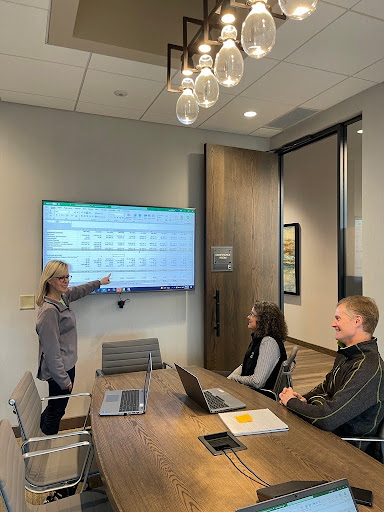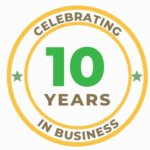To win in today’s competitive talent landscape, you need a benefits package that transcends being a perk to become a strategic recruitment advantage. Robust benefits that align with your employees’ needs not only enhance their satisfaction and loyalty but also serves to bring in top talent. By evaluating your current programs and investing in improved benefits programs, your company will see substantial long-term savings through reduced turnover rates and improved employee productivity.
The human resources (HR) experts at Flex-Able Solutions understand the value of a competitive and comprehensive benefits package. We help companies appeal to the talent they need for sustainable growth using the tactics outlined below.
Understand Employee Preferences
According to Gallup research, only one third of employees felt engaged in 2023. The article estimates that this led to a loss of $1.9 trillion in lost revenue and attributes the dissatisfaction to a feeling of apathy. Workers didn’t feel like their employers cared about them as a person. This trend highlights the need to understand your employees’ preferences around their job so that they feel acknowledged and appreciated.
To create a benefits package that resonates with your workforce, HR leaders should first create open communication channels via employee benefits surveys, focus groups, or one-on-one interviews. The results of this research will spotlight which benefits employees value most and identify gaps in your current offerings. HR leaders can then make informed, data-driven decisions about which benefits to add or prioritize.
Offer Essential Employee Benefits…
While the specific benefits offered to employees may vary based on industry, company size, and employee demographics, there are several key components that most employees have come to expect from their employers:
- Health Insurance: Comprehensive medical, dental, and vision coverage are often at the top of employees’ wish lists. It’s important to note that not all plans are equal and as inflation continues to drive health insurance costs up, employees feel the crunch as much as employers. Having a plan that supports your employees’ healthcare needs makes you stand out.
- Retirement Plans: Retirement savings options, such as 401(k) plans with employer matching contributions, demonstrate a long-term commitment to employees’ financial well-being. They also foster employee loyalty as employees build value in their accounts.
- Paid Time Off: Generous paid time off policies, including vacation days, sick leave, and parental leave significantly improve work-life balance and employee satisfaction.
Professional Development: Opportunities for growth and career advancement, such as tuition reimbursement, training programs, and mentorship initiatives foster a culture of continuous learning and employee engagement.
… But Look Beyond the Traditional Benefit Package
While the traditional benefits above are foundational, modern employees place increasing value on lifestyle-based benefits that facilitate a more satisfying work/life balance. These include:
- Wellness Programs: Initiatives that promote physical and mental well-being, such as gym memberships, employee assistance programs, and mindfulness workshops contribute to a healthier, more balanced, and more productive workforce.
- Flexible working conditions: Since the pandemic, employees have discovered the benefits of a hybrid work model. Add telecommuting, flexible hours, remote work, and compressed workweeks to appeal to this shifting demographic.
- Parental leave: Extended maternity and paternity leave policies support families and relieve stress for employees juggling work and diaper duty.
- Mental health support: Providing access to counseling services, mental health days, and stress management programs acknowledges the importance of mental well-being to the overall health of your organization.
- Financial wellness programs: Educational workshops on budgeting, financial planning, and investment strategies empower employees to make informed financial decisions.
- Education and enrichment opportunities: Beyond continued education and career development, offering sabbaticals, research grants, and extended leaves gives employees the opportunity to expand their knowledge, increase their skills, and return a more valuable asset.

Further Considerations
Tailored Benefits
One size does not fit all and personalized benefit plans that allow employees to choose the options that best fit their individual needs are a significant draw. Options can range from flexible work schedules to customizable health coverage and education stipends. This empowers employees to make choices that best support their lifestyle and career goals.
Enhanced Employee Benefit Communication
Effective communication and thorough onboarding are crucial for ensuring that employees understand and appreciate their benefits. Companies should invest in clear and accessible resources, such as employee handbooks, online portals, and dedicated benefits specialists, to help employees navigate their options and make informed decisions. Hold regular benefits training sessions so that your employees continue to get the most out of their packages.
Competitive Analysis
Understanding what your competitors offer can give your company a competitive advantage. This analysis can highlight potential areas for improvement in your own benefits strategy and identify ways to appeal to a larger talent pool.

Leverage Fractional Expertise
Enhance your benefits offerings without the burden of managing complex HR processes in-house. The fractional HR experts at Flex-Able Solutions are industry leaders in implementing and managing enhanced benefits strategies for all types of companies. By providing access on an as-needed basis, we help you develop and maintain a benefits package that is both competitive and aligned with your organizational goals.
Contact our team today and get paired with an employee benefits specialist. We’ll develop the best employee benefits plan to improve your company morale, boost productivity, and increase worker retention.































